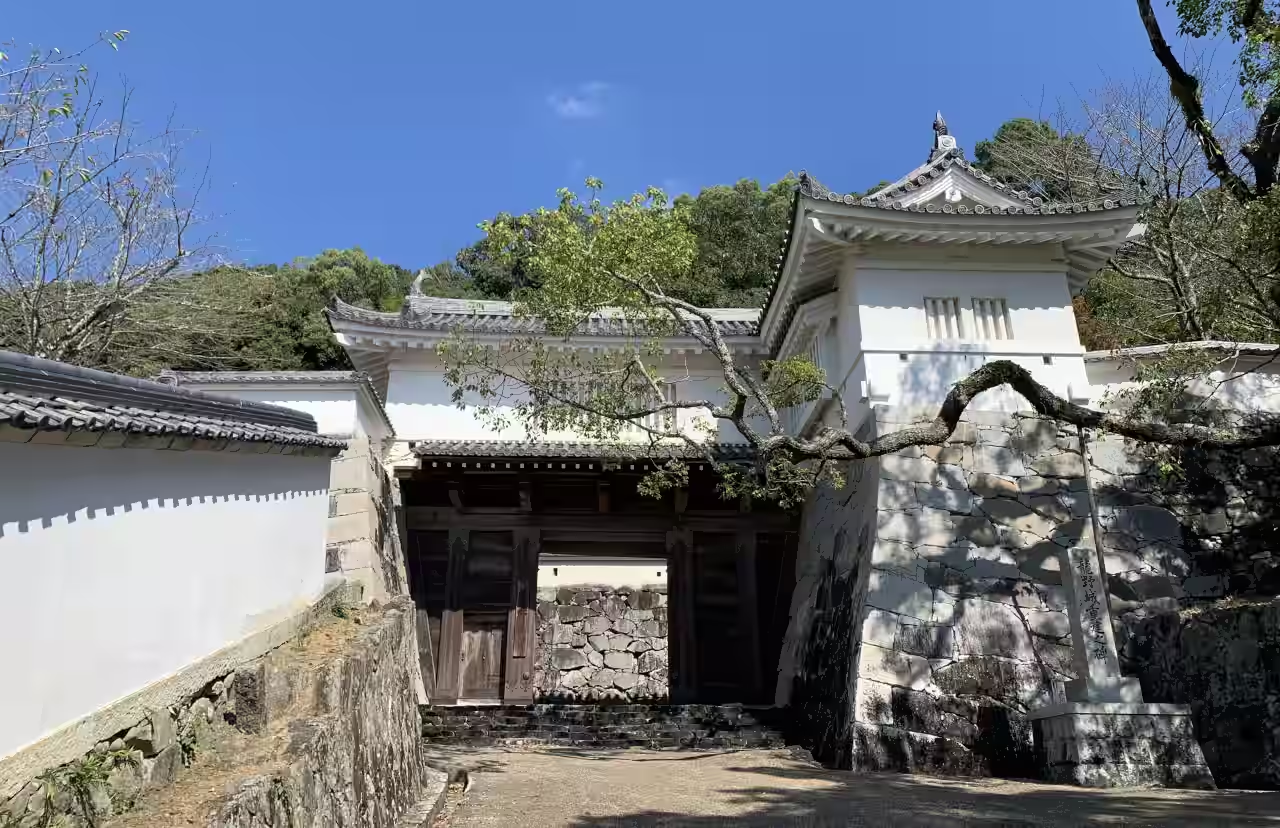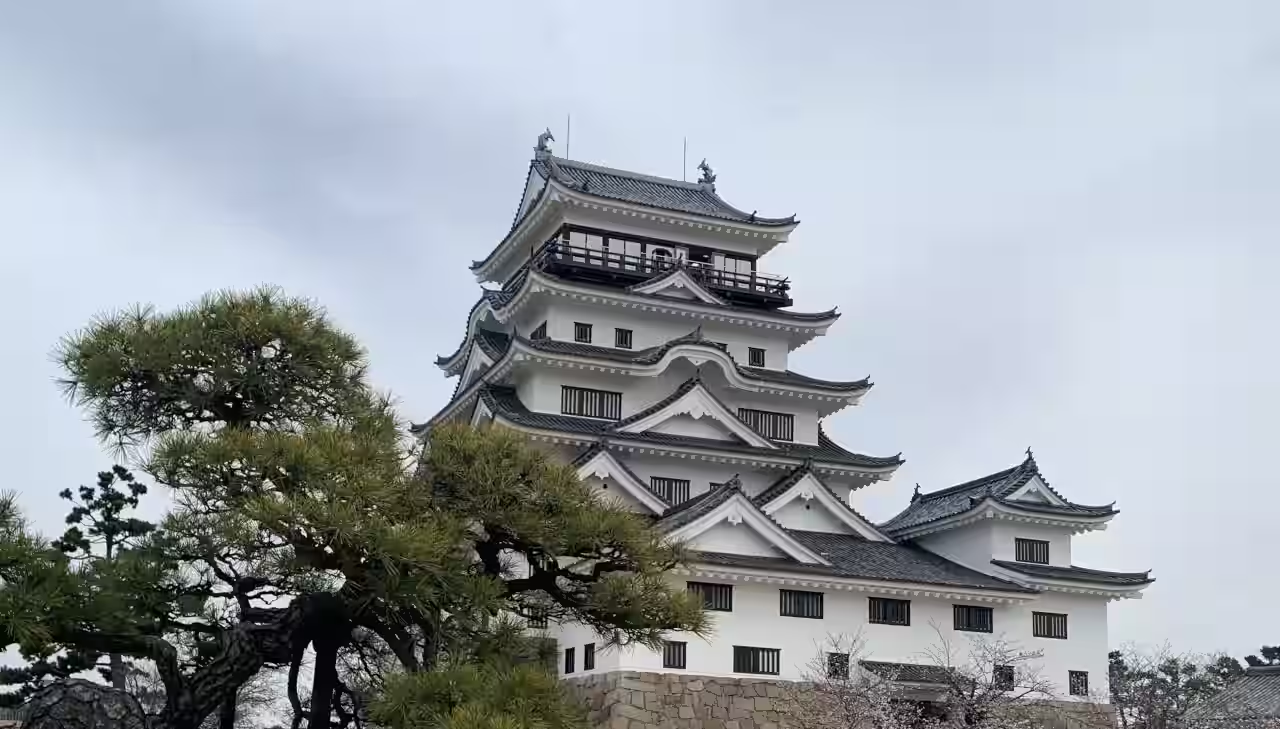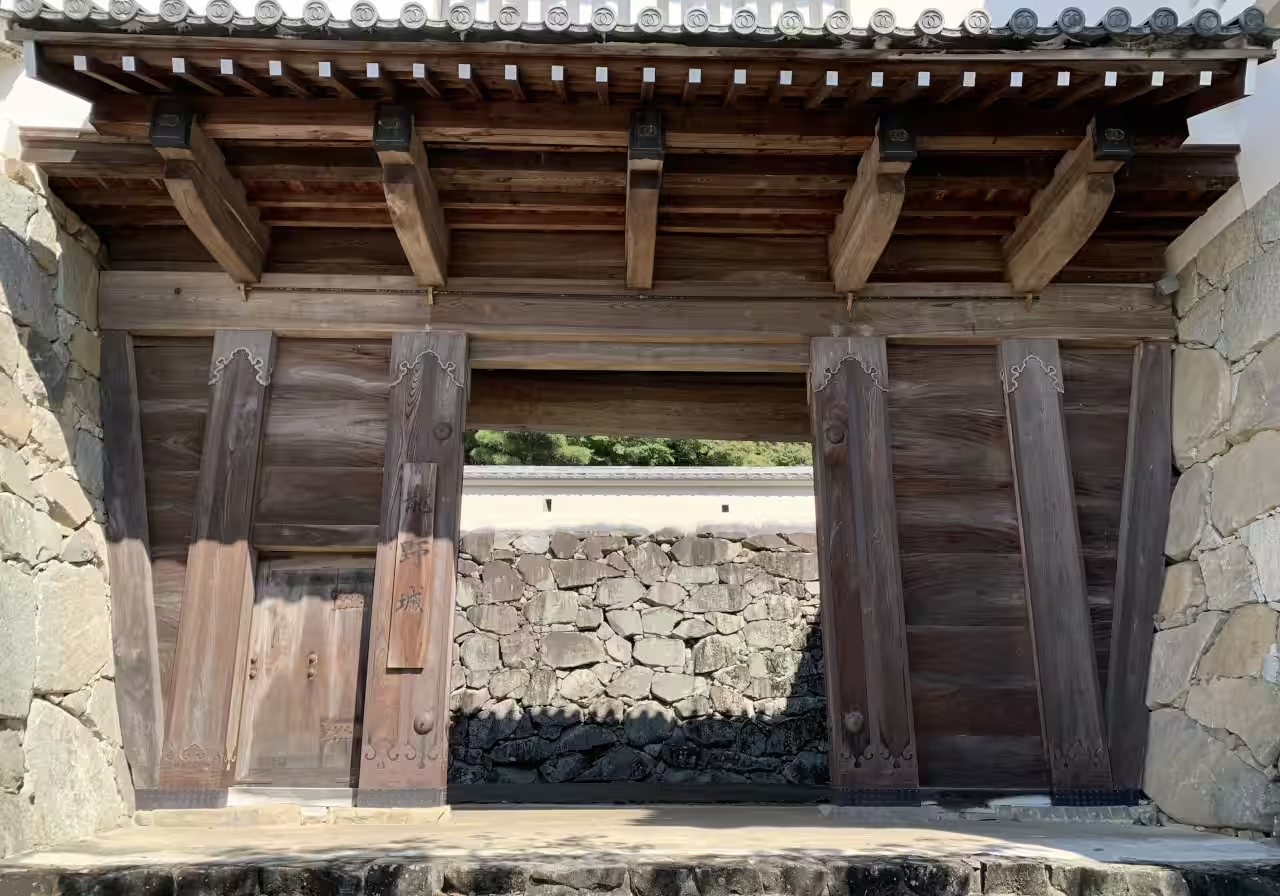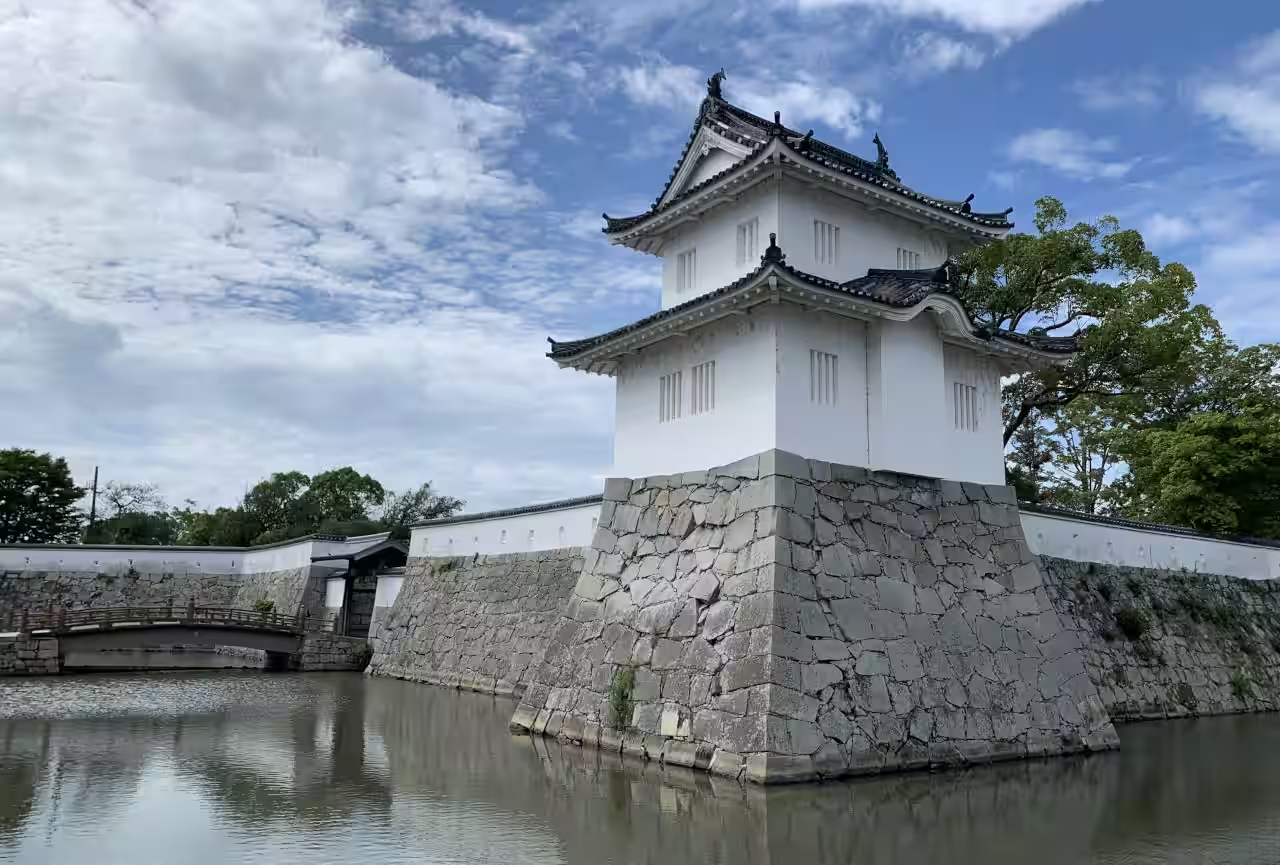A decade ago, I was given some documents from my great-grandfather on my mother’s side, including a family history sheet that he authored. While it doesn’t include many details, it records the ancestors of each family connected through marriage, likely passed down verbally over generations. One of the entries reads:
The paternal ancestor is named Takagi Riemon. He was a vassal of the Tatsuno domain, but after a lost war, he went into exile and settled in the small village of Yamaguchi, Kasaoka, in Okayama.
I searched the internet and found a webpage about Hachiman Shrine in the town of Yamaguchi, located in the city of Kasaoka. The page mentioned a stone lantern engraved with an inscription stating it was donated by Takagi Riemon on September 22, 1702. This was the first concrete proof of Riemon’s existence and strongly suggests that he likely lived in Yamaguchi, just as my great-grandfather had indicated.
My great-grandfather's story did not specify the time period, but based on this piece of information, I can reasonably assume that Takagi Riemon lived in Tatsuno during the late 17th century and moved to Yamaguchi in or before 1702.
To further investigate, I visited the Hyogo Prefectural Library located in the city of Akashi and asked a librarian to show me a prefectural history book that contains the Bungen-chō — a list of vassals — of the Tatsuno clan. Under the lord Wakizaka Yasumasa, who served as daimyo from 1672 to 1684, I found the Takagi family name. The first name listed was Takagi Yaemon, which differs from "Riemon" by only one kanji character out of four.
Although I don't yet have definitive proof that Yaemon and Riemon are directly related — whether as father and son or possibly the same person (as name changes or having multiple names were common in those days) — I intend to validate this connection later. For the time being, I am considering Yaemon as our ancestor for the purpose of continuing my research, as this aligns with the story passed down by my great-grandfather.
The Bungen-chō listed Yaemon as a Tsukai-ban, a role responsible for relaying orders between the main camp and frontline units during battle. In peacetime, Tsukai-ban vassals were tasked with traveling to other regions to conduct diplomatic negotiations on behalf of the clan. Yaemon's salary was 300 koku, which represents the amount of rice needed to feed 300 people for a year.
The Tatsuno clan had 15 Tsukai-ban vassals, and since Yaemon was the highest-ranked among them, it’s likely that he played a senior role, handling more complex tasks like diplomatic negotiations with other clans rather than simply delivering letters or messages. In comparison, for other clans like Hikone, vassals with a stipend of 250 koku or more were provided with a horse and an allowance for its upkeep. Given Yaemon’s rank and duties, it is reasonable to assume that he, too, rode a horse as part of his role.
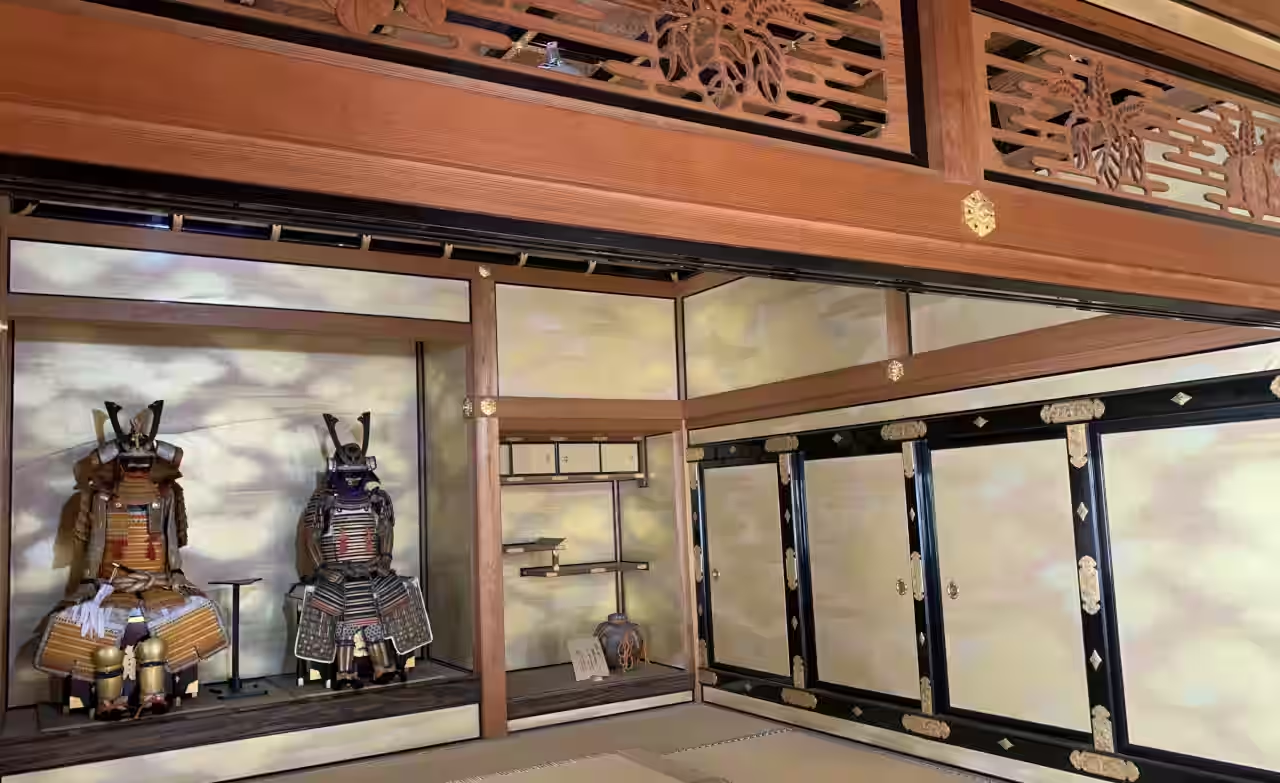 Honmaru Residence of Tatsuno castle
Honmaru Residence of Tatsuno castle
While examining the Bungen-chō, one detail that caught my attention was a note stating that ties were severed with 27 vassals, including Yaemon, which accounted for 18% of the entire vassal corps of the Tatsuno clan. This detail stood out because, contrary to my great-grandfather’s notes, there were no records of battles involving the Tatsuno clan during that period. It’s possible that the “lost battle” my great-grandfather mentioned was a fabricated explanation to obscure what had actually happened to Yaemon.
One sunny day, I visited the town of Tatsuno — a small, quiet, and charming place with remnants of Edo-era samurai housing and the remains of Tatsuno Castle.
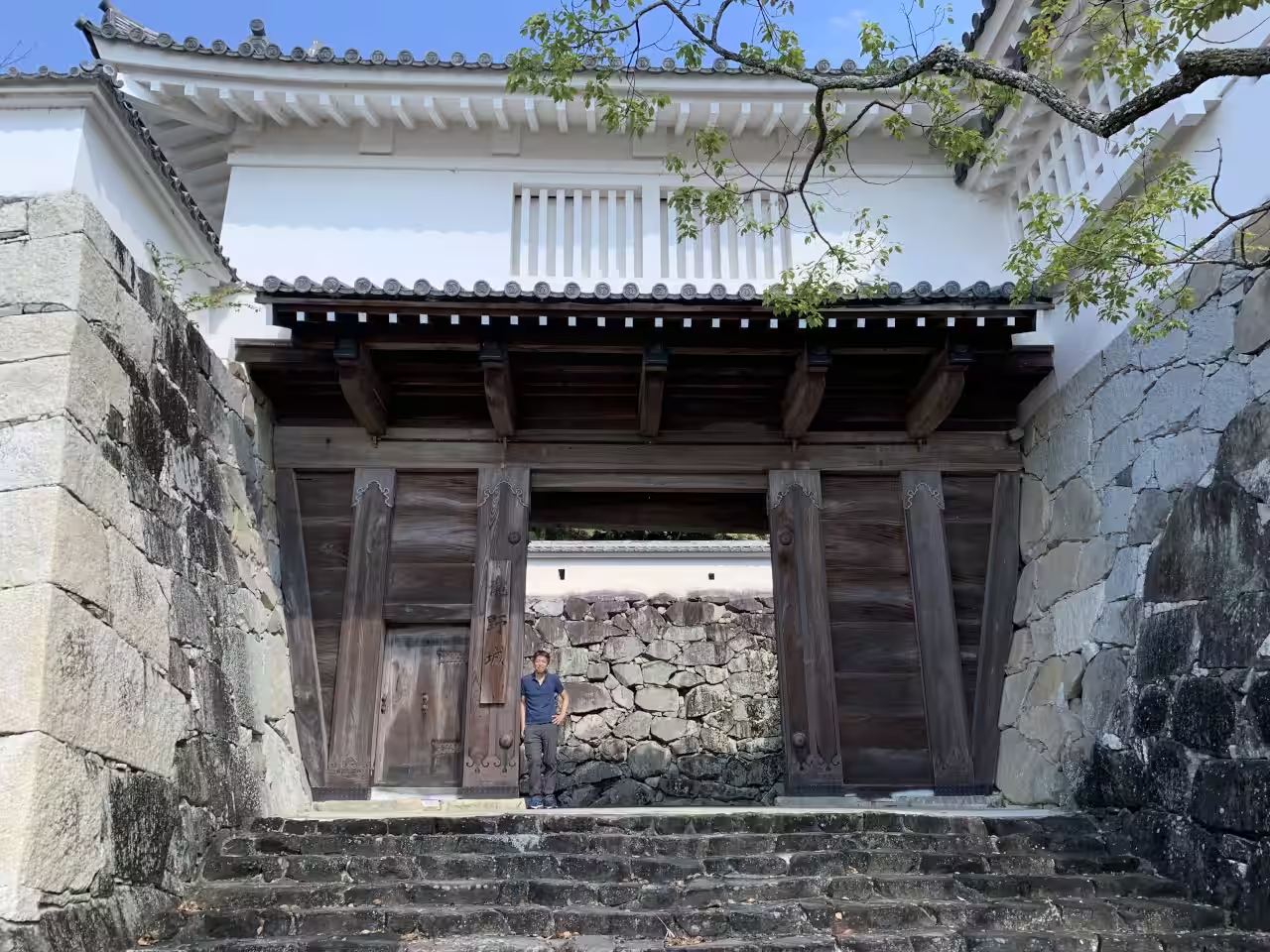 At the front gate of Tatsuno castle, Hyogo
At the front gate of Tatsuno castle, Hyogo
While exploring the Tatsuno History Museum, I purchased a few books. Upon reviewing the contents of the books after returning home, I discovered the name Yaemon listed in the lodging assignment records.
The records revealed that he was traveling alongside Lord Wakizaka Yasumasa and other vassals as they moved from Iida, Nagano, to Tatsuno. This relocation took place after Shogun Tokugawa appointed Yasumasa as the new daimyō of Tatsuno.
I came to understand that, during the Edo period, when the shogunate reassigned a daimyo to another region, the daimyo's retainers would accompany him. The entire group would relocate together to the new castle and its surrounding castle town. This process ensured the daimyo retained his core vassals and maintained continuity in his administration.
Records of lodging assignments for Wakizaka Yasumasa and his vassals moving to Tatsuno show Takagi Yaemon (his name appearing in the bottom right) staying in Imaichi, Takasago, 17 miles east of Tatsuno, on July 14, 1672, while Yasumasa stayed in Himeji that same night. They arrived in Tatsuno the following day, nearly two weeks after leaving home.
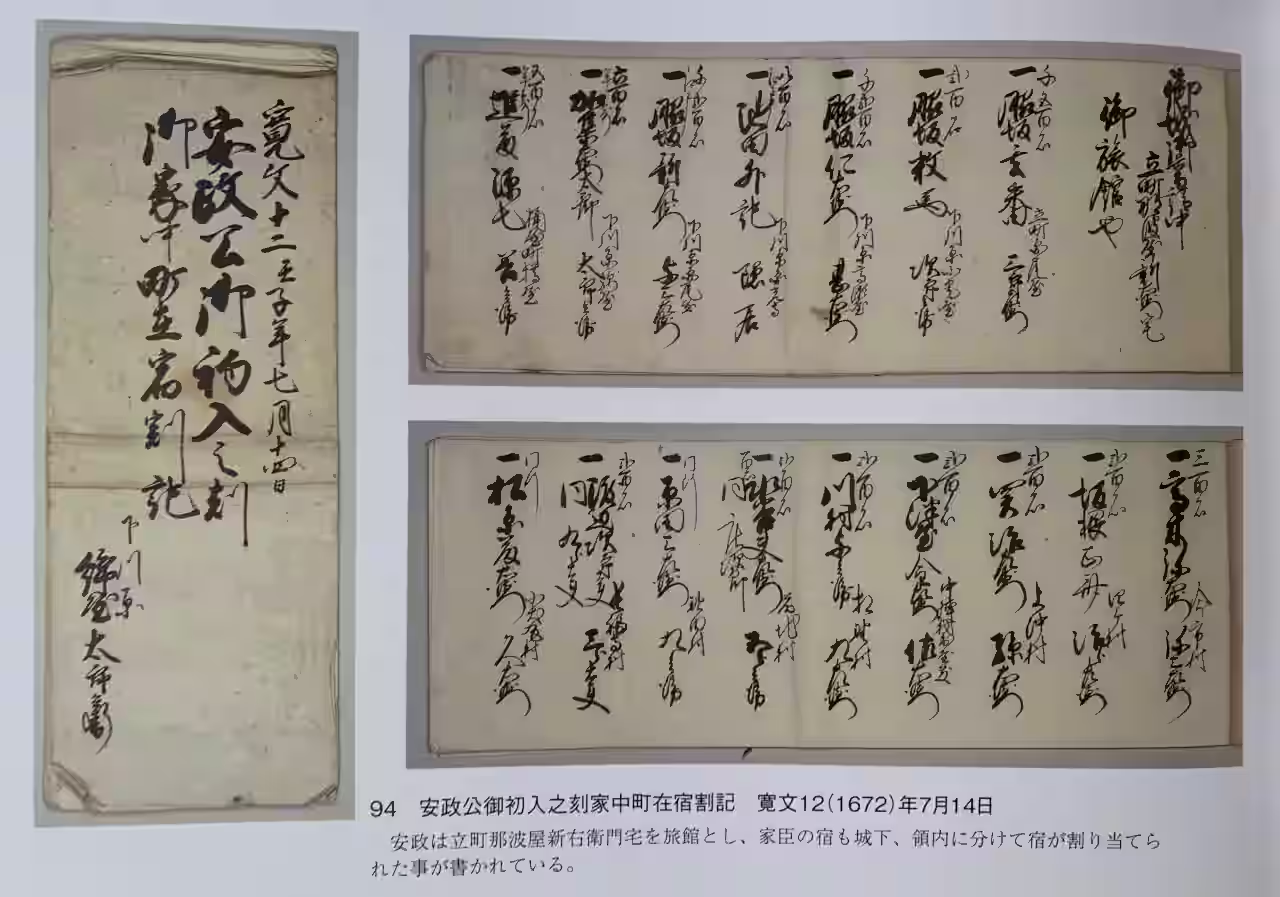 Lodging records of Wakizaka and his vassals
Lodging records of Wakizaka and his vassals
It is notable that, since Tatsuno is a small town, there were no air raids during WWII. As a result, a number of documents from the Edo period were preserved without being burned or destroyed.
